
Axial Podcast
By Joshua Elkington
Axial partners with great founders and inventors. We invest in early-stage life sciences companies such as Appia Bio and Seranova Bio often when they are no more than an idea. If you or someone you know has a great idea or company in life sciences, Axial would be excited to get to know you and possibly invest in your vision and company. We are excited to be in business with you - email us at info@axialvc.com
Read our newsletter: axial.substack.com/
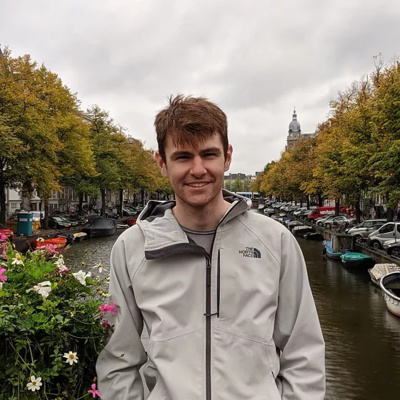
Axial PodcastJan 11, 2022
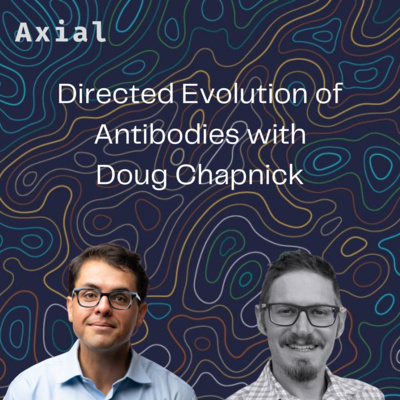
Directed Evolution of Antibodies with Doug Chapnick
Doug Chapnick is the Co-Founder and CEO of BioLoomics. A platform company using directed evolution to discover antibody therapeutics. Combining cell line engineering, machine learning, and imaging.
At the core of BioLoomics' technology is directed evolution, a process that mimics natural evolution in the lab. The company uses this to create biologics for a given property like target engagement or stability. Traditional directed evolution relies on displaying proteins on the surface of cells or viruses and using binding or activity assays to isolate variants with enhanced characteristics. However, this approach has limitations, especially when evolving complex proteins like antibodies that require proper folding and post-translational modifications found in human cells.
BioLoomics circumvents these issues by using human cell libraries that naturally produce fully human antibodies. Their key innovation is an advanced imaging and computer vision system that can track millions of individual cells in these libraries and quantify cellular phenotypes using fluorescent biosensors. This allows them to precisely identify rare cells producing antibodies with the desired activity.
For example, BioLoomics might engineer biosensor cell lines where a fluorescent protein reports on the degradation of a specific target protein. They can then screen human antibody libraries in these cells, using computer vision to pick out the few cells that show enhanced degradation of the target compared to typical antibodies. By isolating the genetic sequences encoding these rare antibodies, they can rapidly iterate and evolve highly specific protein degraders or other therapeutic antibodies.
This live cell-based directed evolution approach has several key advantages. First, by working in human cells, BioLoomics ensures their engineered antibodies are naturally folded, glycosylated, and trafficked properly for optimal therapeutic activity. Second, the use of biosensors allows them to select for very specific mechanisms of action, rather than just binding - enabling development of precisely targeted degraders or modulators. Finally, the high-throughput nature of their platform facilitates rapid exploration of vast protein sequence landscapes to find optimal solutions.
In our conversation, we also talk about Doug’s work that set up BioLoomics. His PhD work at the University of Colorado Boulder focused on understanding cellular signaling networks and mechanisms through multi-omics approaches like proteomics and metabolomics. After, he was part of the DARPA Rapid Threat Assessment program, where he built out high-throughput microscopy workflows. Where the core idea behind BioLoomics emerged from this DARPA project. Chapnick co-founded BioLoomics in 2019 to bring directed evolution to therapeutic antibody development.
A key focus area for BioLoomics is developing novel antibody degraders that can precisely remove target proteins from cells by marking them for lysosomal degradation. While a few companies have developed degraders based on binding to specific E3 ligase enzymes, BioLoomics' platform allows them to evolve degraders that act through diverse and unexplored mechanisms not limited to any single pathway. For example, they could evolve antibodies that traffick target proteins to lysosomes through interactions with sorting receptors or endocytic adaptor proteins. Or create antibody fusions that oligomerize targets and induce their proteasomal degradation. The diversity of potential mechanisms enabled by their platform could lead to a whole new class of highly specific protein degraders for tackling undruggable targets across multiple disease areas. By combining human cell libraries, advanced imaging, computer vision, and directed evolution, BioLoomics is pioneering a new path for antibody discovery.

Building the Ultimate Patent Assistant with Evan Zimmerman
Evan Zimmerman is the Co-Founder and CEO of Edge, that helps patent attorneys, patent agents, and inventors make the patent process less painful and more effective.
He earned a Juris Doctor (JD) degree from the UC Berkeley Law School, where he specialized in IP law. Seeing the potential of AI to transform the patent system, Zimmerman teamed up with Len Boyette, an early employee at Okta. Together, they went through the Y Combinator accelerator program in 2022 to build Edge.
Edge's AI-powered patent assistant aims to automate and streamline every step of the patent process, from recreating patent claims from basic technology descriptions to suggesting improvements and identifying relevant prior art. This approach removes the grunt work for attorneys and patent agents while making high-quality patents more accessible for inventors and companies.
The patent system is critical for protecting inventions and stimulating innovation, but is often cumbersome for all involved. For attorneys and patent agents, the system involves painstaking hours poring over documents, extracting key technical details, and translating those details into watertight patent claims. For inventors and companies, the costs and complexities of patents can be prohibitive.
Edge aims to change all that by using AI to automate and streamline every step of the patent process. Evan describes Edge as "the ultimate patent assistant", able to recreate patent claims from basic technology descriptions, suggest areas for improvement, and more. This removes grunt work for practitioners while making high-quality patents more accessible for innovators.
Edge's product offering is centered on a patent editor and assistant app. For example, Edge generated claims mimicking those from the famous PageRank patent solely from a description of the technology, capturing nuances an inventor might have missed. Its AI also suggests ways to strengthen claims, identifies relevant prior art, and more.
Evan sees Edge as revolutionizing how patents are created and managed. For attorneys and agents, it removes the drudgery of claim drafting and prior art searching. For inventors and companies, it makes robust patents far more accessible. He sees patents as a rising tide that can lift all boats when done right. By using technology to democratize access to effective patents, Edge seeks to empower inventors.
Just as the Kitty Hawk Flyer gave rise to modern aviation, robust yet accessible patents can spur the next wave of human ingenuity.

Improving Software Engineering in Biostatistics with Daniel Sabanés Bové
Daniel Sabanés Bové is a senior principal data scientist at Roche. In our conversation, we discuss the need for better software in biotech and his career in data science.
Daniel studied statistics at Ludwig Maximilian University of Munich in Germany, earning his PhD in 2013 from the University of Zurich in Switzerland. His doctoral research focused on Bayesian model selection. After completing his PhD, Daniel began his at Roche as a biostatistician. There, he applied statistical principles to clinical trials and research in areas like oncology, immunology, and neuroscience.
In 2018, Daniel joined Google as a data scientist. While there, he worked on ranking systems, developing models to optimize search results. Then in 2020, Daniel returned back to Roche to lead a specialized team focused on statistical engineering.
Throughout his career, Daniel has co-authored multiple R packages published on CRAN and Bioconductor. He also co-wrote the book 'Likelihood and Bayesian Inference: With Applications in Biology and Medicine'. Currently, he serves as co-chair of an ASA working group called openstatsware that promotes software engineering in biostatistics.
According to Daniel, software engineering principles are often neglected in biostatistics. Most biostatisticians know a programming language like R, but lack formal training in writing reusable, reliable code. Daniel argues this is problematic for several reasons.
First, without code reviews, we risk making erroneous analytical decisions based on buggy statistical software. Code passed from statistician to statistician without documentation makes reproducibility impossible. In regulated fields like pharmaceuticals, validation protocols are needed to verify analyses, but require engineered code. Even modifying poorly written software can introduce unexpected behaviors without sufficient testing.
To address these problems, Daniel calls on the biostatistics community to prioritize software engineering skills. Change starts with awareness - we must recognize the value of good engineering. Next, software engineering concepts need integration across statistics curriculums - in both academia and industry.
Dedicated software engineering teams play a key role. They can catalyze adoption of engineering best practices within research teams and provide training. Providing attractive career growth for software-oriented roles aids retention of technical talent.
Cross-organizational collaboration also helps. By sharing insights and contributing to open source tools, we make better use of resources. Following modern engineering practices facilitates building reusable components. Daniel points to projects like Mediana (for clinical trial simulations) as examples of successful collaborative open source biostatistics software.
What could improved software engineering mean for biostatistical analyses? Daniel foresees greater efficiency and integrity. With robust code review protocols, analyses have higher accuracy. Well-documented software enhances reproducibility. A strong testing culture provides safety nets against inadvertent bugs. Modular, reusable code makes implementing new analyses faster. Validation frameworks give regulators necessary confidence in results.
Daniel also notes how high-quality software enables faster innovation. By encapsulating complex methods in packages, researchers can build on previous work rather than recoding from scratch. Reliable software tools empower statisticians to operate at higher levels of abstraction.
Ultimately, Daniel argues that pursing excellence in software engineering serves both ethical and practical ends. Ethically, biostatisticians have an obligation to provide sound statistical guidance. Pursuing engineering excellence helps fulfill this duty. Practically, improved software engineering makes biostatisticians more effective in their work - accelerating discoveries and powering data-driven decisions.
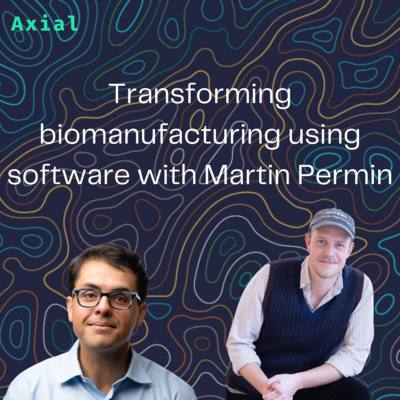
Transforming biomanufacturing using software with Martin Permin
Excited to have a conversation with Martin Permin, Founder and CEO of Invert. The company is on a mission to transform biomanufacturing through advanced software and data analytics. We discuss the founding of Invert, what capabilities they give their customers, and the importance of biomanufacturing to grow biological products like proteins, enzymes, and specialty chemicals. Production from bioreactors allows us to produce important medicines, sustainable materials, biofuels, and other products that will shape our future. However, it's incredibly complex with so many variables to control. A perfect place for software to shine. And where Invert comes in.
Martin started the company in 2021 to help biomanufacturers manage, analyze, and optimize their data. The Invert platform integrates with bioreactors and databases to capture bioprocessing data. It then applies AI and analytics to surface insights and identify process improvements. Just ID’ing ways to improve, or avoiding bad runs, in bioprocessing is a major pain point for companies trying to develop or scale up their manufacturing. Invert makes it seamless to manage these processes across an organization.
Before starting Invert, Martin had an entrepreneurial career with roles at Airbnb and Hive. Then saw an opportunity to bring a modern software solution to the biotech industry. Invert’s features really exemplify this vision. The platform provides tools for planning experiments, monitoring bioprocess runs as they happen, analyzing results across projects, modeling scale-up, and collaborating with partners. It works to eliminate all the manual workflows that hold companies back.
Since launch, Invert has had strong traction within synthetic biology and industrial biotech setting up expansion to biopharma customers. For many, it's become mission-critical for managing their data and enabling team collaboration. In our conversation, Martin talks about how customers use Invert at various stages of their product development. From optimizing algae strains to make renewable chemicals. To developing synthetic meats and helping customers compare runs across sites. Martin also shares his vision for the future of biomanufacturing and software for biotech. Where he paints a picture on how data-driven science can lead to more accessible medicines, foods, and materials.
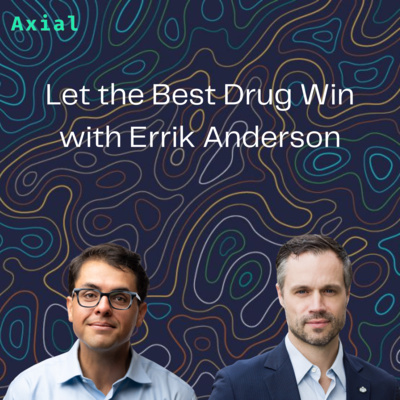
Let the Best Drug Win with Errik Anderson
Errik Anderson is the CEO and Founder of Alloy Therapeutics. Founded in 2017, the company democratizes access to drug discovery platforms and services. In our conversation, we discuss Alloy's product offering and story.
Alloy has rapidly grown into a thriving ecosystem empowering the global scientific community. The company's innovative business model is centered on 3 pillars: platforms, services, and company creation. Alloy develops technologies such as its ATX-Gx humanized transgenic mice antibody discovery platform and makes them available to partners through non-exclusive, affordable licensing. This allows even academic labs and small biotechs to use powerful tools previously only accessible to large pharmas. Alloy also provides tailored drug discovery services, running campaigns for clients seeking to outsource highly specialized work. Anderson embraces the "service mentality" as it generates revenue to improve Alloy's platforms, while solving problems for partners.
The third pillar is Alloy's venture studio 82VS, which incubates startups. By providing access to platforms, services, and expertise, Alloy enables entrepreneurs to rapidly validate ideas and generate data, removing traditional barriers faced by first-time founders. Anderson views this as a way to "democratize" access not just to technology, but also capital and talent.
Fundamental to Alloy's model is a commitment to accessibility and collaboration. Anderson envisions that sharing innovations, rather than hoarding them, can accelerate the overall pace of progress. The company now has over 150 partners, including top pharmas, biotechs, and academics. Unusually, Alloy reinvests 100% of its revenues into developing new technologies and making them available to all. This mentality allows for a longer-term approach compared to the traditional biotech company.
Anderson's vision for Alloy is ambitious - to reduce barriers so the best scientific ideas can efficiently become therapies that help patients. Leading to a motto emblazoned on everything from shirts to jackets: 'Let the best drug win.'
Central to Alloy's identity is Anderson himself. Anderson thinks in unique ways, evidenced by Alloy's unique perpetual structure - its controlling stock can never be sold. This allows for indefinitely long timelines, reinforced by the policy of reinvesting all revenues.
Looking ahead, Alloy is expanding into new modalities like oligonucleotides, cell therapy and peptide discovery. Continuing to drive its democratization agenda, Alloy has potential to reshape how biotech innovation happens. With Anderson's bold vision, the company is accelerating scientific progress and drug development. By enabling startups and academic groups to access tools previously only available to big pharma. Alloy now powers drugs heading into the clinic across its network.

Leadership and Bioengineering with Omar Ali
Omar Ali is the Senior Director of Research at Lyell Immunopharma. Omar discusses leadership lessons he's picked up across 2 decades working at the intersection of bioengineering and drug development. Starting his first company during grad school at Harvard. Afterwards spending ~7 years at the Wyss Institute for Biologically Inspired Engineering. Setting up his second startup, Immulus, focused on immune cell expansion. That was acquired by Lyell. Omar is an expert in a wide-range of fields from biomaterials and immunotherapy to drug deliver, cancer vaccines, and chemistry; however, his superpower is managing interdisciplinary teams and leadership.
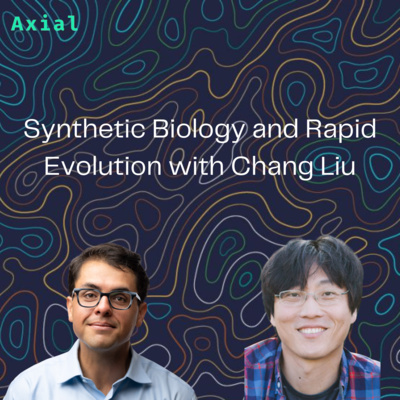
Synthetic Biology and Rapid Evolution with Chang Liu
Chang Liu is a professor at UC Irvine pioneering the application of rapid evolution in synthetic biology and protein engineering. We discuss his career and what it takes to startup & lead a new academic lab. Chang's work spans the fields of genetic engineering, synthetic biology, chemical biology, cell biology, and directed evolution. Where his lab engineers specialized genetic systems that go beyond what nature’s genetic systems can do. Where they are especially interested in creating living cells that dramatically accelerate the speed of evolution, that reinterpret the genetic code, and that can record transient information as heritable genetic mutations. Applying these cells to the discovery of useful biomolecules, biopolymers, and therapeutics; the study of molecular evolution; cell and developmental biology; and the creation and evolution of synthetic life.

Founding Unlearn and Revolutionizing Clinical Trials with Charles Fisher
Charles Fisher is the Founder and CEO of Unlearn, that creates digital twins with AI to enable more efficient clinical trials. Founded in 2017, Unlearn started as a generative AI company looking for a problem, ending up on clinical trials & transforming how they are run. A digital Twin is a longitudinal/clinical record using baseline data from a patient before they receive their 1st treatment. To predict how the patient would likely progress in the trial if given a placebo. And increase statistical power of the trial without enrolling more patients. Unlearn sells their TwinRCT product to companies & institutions to optimize their clinical trials. Signing a multi-year collaboration with German Merck in 2022 and getting EMA qualification for phase 2/3 trials later that year. Initially focused on AD & MS. Unlearn is improving trial efficiency, with 12%-39% fewer subjects required, and helping lower the costs it takes to develop new medicines for neurodegeneration, inflammatory disease, and more.
Charles discusses his career starting as a scientist with interests at the intersection of physics, machine learning, and computational biology. Then joining Leap Motion as a machine learning engineering and Pfizer as a computational biologist. All leading up to starting Unlearn.
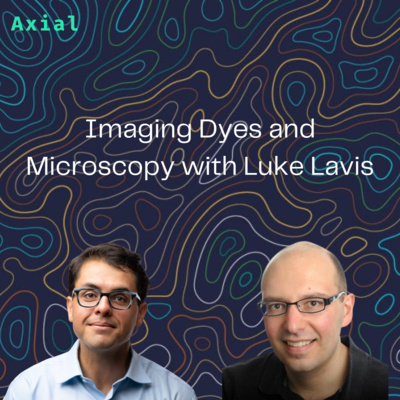
Imaging Dyes and Microscopy with Luke Lavis
Luke Lavis is a senior group leader and head of molecular tools and imaging at HHMI’s Janelia Research Campus. Luke Lavis works at the interface of chemistry and biology, developing small-molecule fluorescent dyes to illuminate biological samples. Lavis and his team use modern organic chemistry to design and synthesize bright fluorescent labels for imaging structures inside living cells. By combining these novel compounds with advances in instrumentation, protein engineering, and genetic manipulation, the Lavis Lab and their collaborators devise sophisticated bioimaging experiments at different scales ranging from tracking single molecules to measuring neural activity in cells and animals.
“I sometimes call Luke our secret weapon here. Every advance I’ve made in my career has been due to fluorescent probes.”
- Eric Betzig, Nobel Prize Laureate in Chemistry for 2014
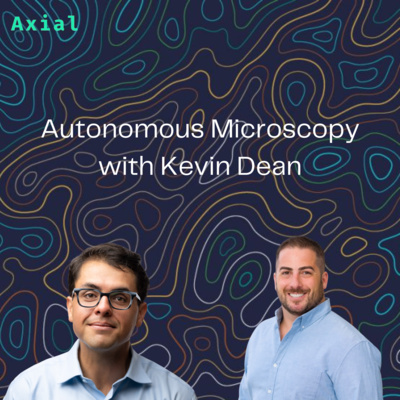
Autonomous Microscopy with Kevin Dean
Kevin Dean is a professor at UT Southwestern pioneering autonomous microscopes and applying them to study rare biological events, mainly metastatic colonization. In our conversation we talk about his research and the current status of microscopy. Kevin was raised in a small town in Northern California earning his BA in Chemistry at Willamette University in Oregon, and was recognized twice as an ESPN Regional Academic All-American Running Back. He then received his PhD in Biochemistry at the University of Colorado in the labs of Amy Palmer and Ralph Jimenez. Where he focused on spectroscopy, protein engineering, and multi-parameter high-throughput microfluidic analyses and cell sorting.
After earning his PhD, Kevin established the first campus-wide light microscopy facility at the BioFrontiers Institute at the University of Colorado. He then moved to UT Southwestern Medical Center in Dallas to perform his postdoctoral research with Gaudenz Danuser and Reto Fiolka. Now Kevin runs a lab at UT Southwestern that develops technologies that enable the identification and molecular interrogation of exceedingly rare biological events, including metastatic colonization.

Biotech Company Building, Partnering, Investing Towards Better Medicines with Vikas Goyal
Vikas Goyal has one of the best records in biotech having spent over 8 years at SR One partnering with companies like Nimbus and Morphic Therapeutic before joining Pandion Therapeutics (acquired by Merck) full-time after investing in it as well. Now starting Trekk Venture Parners, Vikas' story uniquely blends success across investing, operations, and company building.
Starting off his career at McKinsey, Vikas went on to work with dozens of start-ups and early-stage companies as a consultant at Extera Partners then went off to earn his MBA in healthcare management from Wharton. He started work in business development at Infinity Pharmaceuticals before joining SR One full-time after an internship there during business school.

Founding Hoxton Farms and Creating the Future of Food with Max Jamilly
Max Jamilly is the Co-Founder and CEO of Hoxton Farms, a London-based startup develop cultivated fat as an ingredient for the meat alternatives industry. We discuss his journey from scientist to founder starting at Oxford where Max earned his PhD in synthetic biology. Along with his work at Microsoft Research, Gen9, and in venture capital. Leading up to founding Hoxton with his childhood friend.

Founding Y-Trap and Protein Engineering with Rishi Bedi
Rishi Bedi is the Co-Founder and CEO of Y-Trap a biotech company developing multifunctional fusion proteins for cancer immunotherapy. We discuss the founding story of Y-Trap, the current status of protein engineering and computational biology, along with his career leading up to Y-Trap. Rishi's experience spans machine learning, immuno-oncology, and drug development.
Previously, Rishi built the machine learning team at Herophilus (fka System1 Biosciences), leading the analysis of multi-omics and imaging datasets to identify deep phenotypes of neuropsychiatric diseases in cerebral organoids. Before that, he studied computer science at Stanford, where he developed machine learning methods for structural biology in Ron Dror's group.

Founding AgBiome with Eric Ward
Eric Ward is the Co-Founder and Co-CEO of AgBiome, an agtech company that analyzes crop microbiomes to develop crop protection products & traits. Founded in 2012, AgBiome has no managers; rather, the company uses committees of employees to handle core functions like business development and financials. AgBiome has built a wide-ranging platform, called Genesis, integrating plant genomics with breeding and gene editing to characterize the plant microbiome to do this. On the tools side, AgBiome has more scalable plant screening methods and a growing database of plant microbiomes. AgBiome’s work creates a pretty large database of microbes (>80K, growing by 10Ks annually) & their effects on crops. On the products side, AgBiome uses these tools to hone in on microbes with a particular activity. Leading to 2 major products: Howler and Theia (both fungicides). With this platform and a series of products, AgBiome is helping growers protect their crops from insects, fungal infections, nematodes, and disease in general.
Eric discusses his career that spans over 3 decades from serving as president of the Two Blades Foundation, a non-profit dedicated to promoting the development of durable disease resistance in crops. Prior to that he was CEO and Co-Founder of Cropsolution, an agriculture chemical discovery company focused on novel fungicides. Eric began his career at Ciba-Geigy (later Novartis, now Syngenta), where he held various positions in research management, ultimately serving as co-president of Novartis Agribusiness Biotechnology Research.

Chemistry to Build New Imaging Tools & Probe the Brain with Anand Muthusamy
Anand Muthusamy is a graduate student at Caltech working in the Lester Lab at the intersection of chemistry and neuroscience. In our conversation we discuss his journey starting at Penn where he studied biochemistry with a strong grounding in philosophy. Working in the Petersson lab, focused on unnatural amino acid mutagenesis to control enzyme function and organic synthesis for the development of fluorescent probes, set up Anand to work under Luke Lavis at Janelia.
While at Janelia, Anand used synthetic organic chemistry to make molecular probes often having application for imaging in neuroscience. We talk about his current work in the Lester lab as well as his entrepreneurial ambitions and more.
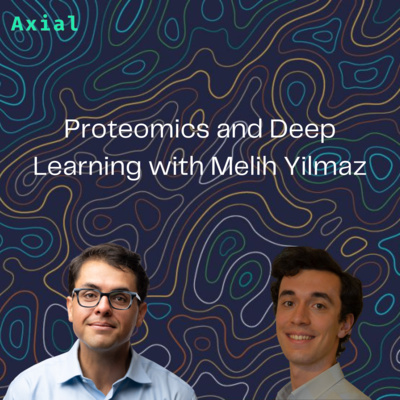
Proteomics and Deep Learning with Melih Yilmaz
Melih Yilmaz is a PhD student at the University of Washington. Where he focuses on computational biology and develop machine learning tools. Advised by William Noble and Sewoong Oh, Melih's current research interests are around proteomics, particularly building deep learning methods to analyze mass spectrometry data.
We start off the conversation talking about his journey to biology and consequently the United States. Around 2016-2017, deep learning had began to gain pace, drawing Melih in. Around the same time, peers of his were going to the US. Slightly influencing Melih to land a research internship at Stanford with Tina Hernandez in the biomedical informatics department.
He then entered a PhD program at Washington after several other internships. We go into various experiences of Melih's as an engineer in biology. Expanding on his work in protein sequencing.
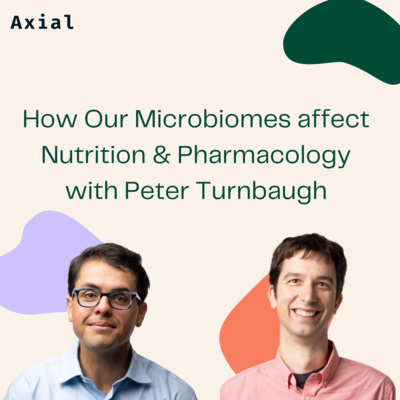
How Our Microbiomes affect Nutrition & Pharmacology with Peter Turnbaugh
Peter Turnbaugh is a professor at UCSF studying the human microbiome’s effect on pharmacology and nutrition. In our conversation, we discuss his journey to become a scientist and help pioneer the microbiome field starting in graduate school. We talk about his research as a fellow at Harvard then professor at UCSF, and his lab’s current work. A key theme across the conversation is learning by doing.
Peter’s work has been anchored around predicting and controlling the metabolism of complex microbial communities. Going to a liberal arts college, Whitman College, Peter gravitated more to science because the grades seemed more objective. An experience in a stem cell lab helped Peter learn that science is not just a series of facts and helped spark him to apply to a PhD program. He applied to a bunch of schools, getting rejected by many of them like UCSF, and got into 2 programs. Peter ultimately chose to attend WUSTL. This might have been one of the best, and luckiest, decisions Peter made.
Washington University in St. Louis was an epicenter for the Human Genome Project and is a hotbed of genomics/bioinformatics talent. Going in his rotations, Peter was excited about genomics and wanted to work on more computational problems. He ended up joining Jeffrey Gordon’s lab, a legend in genomics. Jeff gave Peter the nickname, “Professor,” almost foretelling his future. Ruth Ley had also just joined the lab as a postdoctoral fellow after working with Norman Pace and wanted to study microbes across mammals. She had gone to the St. Louis Zoo to collect samples. On Peter’s first day in the lab, the fridge was full of wild animal poop to study. At the time metagenomics was not widely accepted - many genome scientists thought microbial communities would be impossible to understand.
This is around 2004 and there wasn’t a checklist to follow. Peter, Ruth, and the lab had to not be shy to ask for help in order to pioneer a new field of the human microbiome. This ultimately led to 2 papers in 2006 that established gut microbes associated with obesity.
After writing up his thesis, Peter wanted to “keep going as far as he can go” with science. He became a Bauer Fellow at Harvard, rejected by UCSF again during this process, and was excited to start his own lab. Similar to his grad school research, Peter learned by doing to build a lab. The lab’s initial idea was to switch from studying host-associated microbes' role in diet to pharmacology. Xenobiotics seemed “really weird” and an open field to study. A 2013 paper showed how diet can alter the human microbiome, where the lab had to run the trial themselves - feeding participants a veggie or meat-only diet over 5 days. This type of work helped Peter finally get into UCSF and become a professor.
The next skill he had to learn while doing was grant writing. Up until then, Peter had only written grad school applications and a 3-page proposal to Harvard that gave him 5 years of guaranteed funding. At UCSF, he’s built a highly successful group leading the way on the study of the human microbiome and how it intersects with diet & pharmacology. He’s expanded to work on CRISPR/phage research now, and excited to see how that thread grows over the next few years. Looking back, Peter has gained a greater appreciation for the community, something his grad school mentor, Jeffrey Gordon had emphasized. Just as much as multiple genes affect something like height or a disease, it’s important to go beyond a single microbe causing a phenotype.
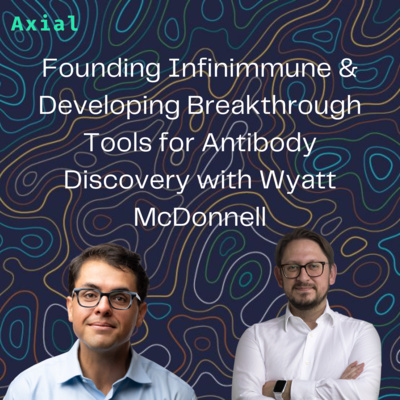
Founding Infinimmune & Developing Breakthrough Tools for Antibody Discovery with Wyatt McDonnell
In our conversation with Wyatt McDonnell, the Co-Founder and CEO of Infinimmune, we discuss his journey to 10X Genomics, his work there, and the founding of Infinimmune. Wyatt is a world-class inventor & immunologist working across a wide range of projects at 10X from launching BEAM (barcode-enabled antigen mapping), working on the Immune Profiling v2 product, and developing various immune repertoire technologies. After making a significant impact on 10X, Wyatt along with 4 other colleagues that had worked together founded Infinimmune to transform human antibodies into drugs.
A key theme of the conversation is that tool users greatly outnumber tool builders. This creates an opportunity for the latter to build applications before others. Infinimmune is hiring across business, engineering, and biology roles. And is a home for tool builders. Please get in touch via founders@infinimmune.com if you're interested in applying your expertise to the next generation of antibody therapeutics.
Wyatt got his first exposure to science from a Breaking Bad consultant that showed him a redox reaction. To Wyatt, it was like “watching alchemy unfold.” He went to Hillsdale, a small college in Michigan where the largest science class had 60 people. This intimacy played a key role in Wyatt’s development and allowed him to speed up his education. He thrived in organic chemistry as a freshman and worked with Frank Steiner, taking 4 of his classes and working in his lab where Wyatt caught the research bug. He had been thinking about medical school but decided to go to Vanderbilt for a PhD program focusing on immunology & precision genomics.
While in graduate school, Wyatt saw 10X Genomics’ Chromium products taking off. People were coming back to use their instruments, something that is pretty rare in scientific research. This motivated him to apply to 10X and end up joining them to build solutions on top of Chromium. Coming on board in the summer of 2019, the first 90 days were spent figuring things out. Wyatt worked on a wide range of projects, and a key reason was his immunology expertise. He had a strong knowledgebase on TCRs, which was pretty rare at 10X at the time, allowing Wyatt to work across divisions. For example, he got to work with David Jaffe, a co-founder of Infinimmune, on the Enclone project. For Wyatt, working at a market leader like 10X was the perfect example to follow when he built his own startup.
After leaving 10X Genomics in the summer of 2022, Wyatt started Infinimmune with people he had worked with at 10X. The company is built with a strong conviction around 3 pillars:
We still don’t understand immunology that well
Adoption of immunology tools has been too slow
The best antibodies come from humans
The platform is centered on analyzing healthy & disease samples to uncover rare, human antibodies. This requires deep analytical expertise, at the raw sequence read level, to maximize the value from sequencing samples. Infinimmume is building the toolkit to discover effective antibodies from patients that might have survived cancer or have protective genes against Alzheimer’s. On this point, for Wyatt, “platforms are only as good as the assets they produce.” Wyatt and the founding team are setting the foundation of the company right now to scale up partnerships and drug development over the next 2 years. Excited to get the update from Wyatt then.

Becoming a World-Class Scientist & The Rules of Enzymes with Margaux Pinney
Margaux Pinney is a Sandler Fellow at UCSF and in our conversation we discuss her journey to become a scientist & leader in her field and her work around enzyme evolution. The Pinney Lab studies how enzymes work, how they got there, and how they will adapt in the future. Margaux grew up in a small town outside of Seattle; Black Diamond, WA named after the high quality coal the town used to produce. As someone "obsessed with details," she thrived in chemistry while in high school. Margaux first considered chemistry as a potential career after a teacher told her she was good at chemistry, Margaux then entered community college, leaving her senior year of high school. Taking organic chemistry and physics, she knew she would pursue science and with her community college professor Keith Clay as a major supporter, Margaux entered the University of Washington for college, working in James Mayer’s lab. Where she began her research on enzymes. And coming from chemistry, to Margaux, enzymes are pretty much magical.
Near the end of college, Margaux wrote an NSF proposal around directed evolution, and after getting the fellowship, she went off to graduate school at Stanford. In 2014, Margaux joined Daniel Herschlag's lab. But also did a master's in medicine, concurrently taking the first 2 years of medical school (the hardest 2 years by the way). To her, the master's program felt like an opportunity because she didn't have to pay the medical school tuition. A common theme in her career: taking full advantage of experiences. While at Stanford, she wanted to study enzymes. After a few references and a gut feeling she chose Daniel's lab. In retrospect, Margaux found the best mentors are committed, push you, and have the time. She initially worked on the RNA side. Telling a story she now uses as a proverb in her lab on doing one experiment at a time - Margaux, early-on, ran 9 gels at once, standing a foot tall and wide. Every single gel failed, and she learned to stick to one gel at a time. Margaux also learned she didn't want to work on RNA and moved to protein enzymes.
She began studying the role of hydrogen bonds in enzyme function. "Enzymes have a history" and are actively evolving. Margaux wanted to figure out the rules that drive enzyme adaptation. Starting as a side project, she began studying temperature adaptation. Something Daniel said not to work on but Margaux did anyway (Daniel and Margaux now joke about this). Ketosteroid isomerase (KSI) is a model enzyme system with about 70 years of research. But with just 2 orthologs studied out of 1000s, its evolution was overlooked. By shining a light on old problems with new tools, mainly a large database of enzyme sequences generated over the last ~20 years, Margaux was able to discover a pattern of single amino acid substitutions that are stabilizing at higher temperatures. Publishing her work in Science in 2021.
Throughout her journey, Margaux has learned that a high degree of commitment and flexibility are essential in science because it's both cyclical & a marathon. Around the time when the COVID-19 pandemic began, she started writing her thesis and won a fellowship at UCSF to start her own lab. She deferred to join the labs of Polly Fordyce & Gavin Sherlock as a postdoctoral fellow, learning their high-throughput methods for enzyme screening. In January 2022, Margaux got her lab off-the-ground to combine high-throughput screening and evolutionary analysis, increasing the throughput of enzymology. By bringing quantitative, high-throughput assays to enzymes, the Pinney Lab investigates enzyme function at a scale beyond traditional biochemistry. Work here is just getting started and excited to see the work Margaux & her group put out of the next few years.

Catalyzing Drug Discovery with AI and Scaled Chemical Libraries with Devon Cayer
Excited to put out a conversation with Devon Cayer, Co-Founder and CEO of 1859, a platform biotech company merging pico-scale screening and AI to scale small molecule discovery. We talk about his story that led him to founding 1859, how the company was built, and the long-term vision. Devon discusses how to set and measure core metrics for drug discovery platforms and business model design. A key theme across the conversation is "[creating] an ecosystem of solutions to problems." A framework Devon picked up during his scientific career and still applies to growing 1859.
Devon first got interested in science through Discover Magazine and Jurassic Park. Then fell in love with chemistry while in college at UCLA. He then went to grad school at Scripps working under M. Reza Ghadiri on everything ranging from molecule computation to DNA barcodes and enzyme therapeutics. The lab was actually nicknamed the "Wizards and Warlocks" lab due to the seemingly crazy ideas they pursued. While there, Devon had several formative experiences around his interests in startups and solving problems in medicine. After his PhD, he went on to co-found MYi Diagnostics, learning a lot of lessons along the way. He then went on to work at Singular Genomics and Omniome to learn more about scaling a business.
While at a Scripps seminar by Richard Lerner on DNA-encoded libraries (DEL), Devon saw an important problem: DELs were relegated to binding-based assays and were not functional or cell-based. Knowing he could screen large libraries at pico-scale and barcode them from his training at Scripps and work at Singular/Omniome, Devon sensed he had a solution for DELs. After assembling the founding team through frequent lunches and talks, 1859 got started in 2018. Named after the publication date of On the Origin of Species by Charles Darwin, 1859 generates functional data for large libraries of chemical matter. The founders began pitching and refining their platform - Devon talks about fundraising and team building here. They have been able to build a platform that can screen millions of compounds every week. 1859's workflow is made up of 4 parts: (1) A target, (2) Tailor-made libraries of 100Ks of compounds, (3) Pico-scale screening to create a structure-activity relationship for each compound, and (4) Using machine learning to identify the best leads. During this part of the conversation we touch on core metrics of the platform and how it was built piece-by-piece.
After talking about the technology, we move into the business model of 1859. Inspired by AbCellera, Adimab, among others to spread out risk of capital intensity, 1859 is a catalyst for drug discovery. The company has built an ecosystem for small molecule discovery with multiple ways to plug into their platform: a Discovery Access program where partners gain access to workflows & libraries, Technology Access where 1859 builds out their technology and capabilities at a partner site, and Program Access where 1859 identifies their own Targets or works with academic institutions to develop medicines for their own pipeline. The company is just getting started but Devon and the entire team have done an impressive job to an idea originally inspired by a scientific talk into reality and a product touching a large set of drug developers and partners.

Building a SaaS Company in Biotech with Abhishek Jha
In our conversation with Abhishek Jha, Co-Founder and CEO of Elucidata, we talk about what it takes to build a SaaS company in biotech, the impact of AI on life sciences, & the prerequisites to build a startup. Abhishek and I discuss his journey as an academic scientist to Agios Pharmaceuticals to founding Elucidata in 2015.
From his journey, a key quote is that “life doesn’t let you do a control experiment.” While making the transition from academia to industry, Abhishek was also exploring D.E. Shaw, where he would have probably stayed to this day, and Elucidata might have never been started. While at Agios, Abhishek was enabling the entire organization with data and spent a lot of time cleaning up data for drug developers. Elucidata was founded as an extension of this work. Data scientists often spend 80% of their time cleaning up data and 20% doing analysis. Elucidata’s mission is to flip that and let their customers spend more time on analysis. Elucidata’s focus was as a product company from day one. We talk about what it takes to build a software company in biotech, given the constraints on the number of customers, and the value of services in the beginning to find product-market fit (PMF). Agios was Elucidata’s first customer, with customers funding product development in the early days. Bootstrapping to find PMF forced Elucidata to make products customers will pay for.
After raising a friends & family round, Elucidata’s growth began to pick up where the company works with 4 out of the top 10 biopharma companies and is the market leader for structuring genomic data particularly RNA-seq (bulk and single-cell) with emerging products in proteomics and other -omics. Their products focus on NLP and data engineering to standardize data sets across life sciences. A comparable company is Fivetran, a data aggregator for enterprises.
For SaaS in biotech, there is a balance between building versus buying, and as a startup developing complementary products without initially competing against your customers. At the end of the conversation, we talk about the need for a strong support structure behind you to found a successful startup. For Abhishek, startups are “one of the best self-improvement processes.” And Elucidata is just getting started. For example, Fivetran took a few years beyond hypergrowth due to the technical difficulties of structuring large, diverse datasets. Following that trajectory, Elucidata is just getting started.

Chemistry to Control Biology & Building a World-Class Lab with Bryan Dickinson
In our conversation, Bryan discusses everything from directed evolution and drugging RNA to what it takes to start a lab. The Dickinson Lab at the University of Chicago is a unique group composed of biochemists & synthetic chemists to cell biologists & synthetic biologists. The lab set up shop in 2014 to use chemistry to control biology with both evolutionary and rational methods. Bryan's research is heavily influenced by his career starting as an undergrad at Maryland with mentorship from David Fushman to graduate research with Chris Chang at UC Berkeley and a postdoc with David Liu at Harvard. At each point, picking up new tools to work with and models to follow.
Bryan "works with people he is inspired by." And that has been a key driver of his group's success. To run such an interdisciplinary lab, Bryan focuses on important problems rather than a particular technique or tool. This not only cultivates openness to new solutions but aligns everyone around a shared passion & purpose. Bryan's lab has 3 main areas of research - (1) Chemical biology for protein lipidation, (2) Biosensors to control PPIs, and the (3) Epitranscriptome. We touch upon several examples here, but the key theme is inventing new, functional molecules, whether they are small molecules, proteins, or engineered organisms, to make breakthroughs in biology. This molecule-agnostic approach requires the ability to synthesize small molecules, screen large libraries of molecules, and use directed evolution to reprogram cells and design proteins. Finally, we discuss how to determine what is a valuable problem to work on. A skill that is nurtured with support from mentors and a team.
A common thread across the conversation is the power of evolution, nature's way of designing things, to not only optimize but uncover new forms of biology. Similar to using a guide to solve a puzzle. As the conversation goes on, it becomes clear chemical biologists will play a central role in breaking down existing barriers to study things like RNA modifications, PPIs, and more. Near the end, we discuss the relationship between academic science and industry especially as early-career scientists join and start their own companies. Bryan's lab has done incredibly creative research and I would recommend everyone to read his papers. Ultimately, Bryan's work is making an impact in therapeutics with a purview on energy/climate and serves as a template for other inventors looking to build interdisciplinary teams.

Immunometabolism, Inflammation and Chemistry Intersecting with Greg Timblin
Greg is currently a postdoctoral fellow at UCSF studying macrophage immunometabolism in cancer and infection. What makes him truly unique is his ability to do groundbreaking research while training to qualify for the Olympic Trials marathon. Although Greg didn’t make it to the Trials due to injury, he did get a Nature Metabolism publication for his work connecting mitohormesis to immunity, with implications in cancer, longevity, and beyond. Greg grew up in a small Nebraska town where his mother, a kindergarten teacher, cultivated an interest in science. Summer biochemistry research at the University of Colorado spurred Greg to go to UC Berkeley for graduate school at the interface of chemistry and biology.
While earning his PhD in the Mark Schlissel & Robert Tjian Labs, Greg would dominate Friday morning MCB basketball games at RSF. He's an even better runner, and was also his high school's starting quarterback. His graduate research focused on the transcriptional regulation of B cell development. After his PhD, Greg delayed his postdoctoral studies to become lab manager in Kaoru Saijo’s lab when she joined the UC Berkeley faculty to have more time to focus on running. In our conversation, we discuss a mysterious observation that led him down a new thread of immunology. After helping set up the lab, Greg decided to transition from lab manager to postdoc, as a screen of endogenous estrogen metabolites had unveiled an entirely new area of macrophage biology. Greg's work, published in Nature Metabolism, established hydroxyestrogens as anti-inflammatory estrogens that work via inducing mitohormesis and rewiring macrophage metabolism. For background, hormesis essentially means a little bit of stress is positive while too much is negative. Mitohormesis is just this phenomenon in mitochondria, and is best-known as a lifespan-promoting stress response in yeast and worms. It's an incredible story of discovery and connecting mitohormesis to the restraint of inflammation, especially in the backdrop of training for the Olympic Trials.
Greg is extending this work at UCSF by exploring an immunometabolic strategy to help macrophages fight cancer and pathogens. Along with this, he has co-founded a startup to translate his mitohormesis work and design novel anti-inflammatory therapeutics. The best is yet to come as Greg defines new areas of immunology and pursues their applications.

Image-Activated Cell Sorting with Keisuke Goda
Keisuke Goda has set the standard for sorting cells based on images. As a professor at the University of Tokyo leading a lab of 53 scientists, Keisuke is developing new tools to explore biology at different scales. During grad school at MIT, he studied gravitational waves in the LIGO group where a collaboration at Caltech led to an opportunity to move into biology at UCLA. By bringing LIGO technology, and a physicist's perspective, to cytometry, Keisuke has been able to pioneer the field of sorting cells by an image. In our conversation, we touch upon his career starting in Japan, 15 years in the US, and finally back to Japan.
Starting around 2007, Keisuke was working on high-speed imaging then moved toward cell sorting after trying to figure out how to integrate imaging into FACS. In short, previous sorting methods don't capture high-resolution spatial features and by adding morphological and other spatial features, we might be able to discover and isolate cells we haven't studied before. Molecular biology has a long history of physicists transforming biology - Keisuke is no different. He made a lot of friends and led a large team of collaborators bringing various fields together from engineering and machine learning to biology. The challenges and opportunities were in managing an interdisciplinary project that had technical roadblocks along the way but more importantly cultural ones. Just as much as Keisuke is world-class at translating different scales of biology, he is equally skilled at translating the languages of various scientific fields.
In 2018, the Goda Lab published research in Cell that established image-activated cell sorting (IACS). This led to the creation of an ecosystem of various groups around the world improving the technology and new applications. And the current state-of-the-art is at sorting thousands of cells per second with IACS with around a 10 ms lag time. Throughput can be increased with tradeoffs in purity and imaging success rate with current projects around developing better neural networks and imaging processing methods to increase the number of cells per second that can be sorted.
Keisuke pursues data-driven research and treats biology as an open field when new techniques and ideas can be mixed-and-matched together. His lab is pursuing new projects related to merging cytometry, microscopy, and sequencing. Essentially, 3 different languages with each at a different scale of time and space. A key lesson from Keisuke's career is making friends to bring different expertises in order to solve important problems. With his view of a long-term opportunity to integrate biological data at different scales, Keisuke and his group have been really good at making friends.

NK Cells and Curing Cancer with Nina Horowitz
Nina is one of the up-and-coming superstars in biotech. Having just earned her PhD in bioengineering at Stanford in the Sunwoo Lab this summer, she has the scientific horsepower and storytelling ability to make a large impact on drug development, business, and the lives of patients. At the age of 8, Nina was diagnosed with an ovarian teratoma. In some ways, that shifted Nina towards a career in science and a mission to cure cancer. But while she was always interested in science, growing up in the suburbs of New York City enabled her to become world-class oboe and bassoon player as well. But in her words, she chose the research path rather than joining a conservatory because "science is a way to help other people [while] music is fun." At Williams College, she studied mathematics and biology and became interested in the progress going on in the cell therapy space, particularly CAR-T. This is around 2014 when companies like Juno Therapeutics, Novartis, and Kite Pharma were engineering patient T-cells to hone in on lymphomas. With a growing interest in bioengineering and the early clinical successes in CAR-T, Nina was compelled to join the LEAP program at Boston University to study bioengineering with a goal of engineering immune cells to target cancer.
After applying to a number of graduate programs, Nina ended up at Stanford. She rotated through 5 labs: Irv Weissman, Garry Nolan, Crystal Mackall, Edgar Engleman, and John Sunwoo. These experiences ended up having a major impact on her research where she was able to have the flexibility to pursue the projects she was excited by in cell therapies and use various tools/methods she picked up from the other 4 groups in her graduate research. Early-on in grad school, her cancer relapsed and she was treated again. One thing about Nina is her grit. She was able to still move forward with her work despite all of this. Truly amazing.
Her first project ended up not working out perfectly but taught Nina how to choose problems to work on. Michael Fischbach helps teach a class at Stanford, BioE 395, on this topic that Nina and I would recommend checking out. Her next project focused on studying subtypes of NK cells in tumors and generating functional data to figure out if they are a unique class of immune cells or an artifact of single-cell sequencing. After figuring out how to run an experiment with 1 month of prep, around 4 days of work, and then 3 weeks of data acquisition and analysis (shout-out to Gail for the help), Nina was able to discover a novel functionality of a new NK cell type that resembles ieILC1s, which have potent anti-tumor activity. Once she was able to show the experiment worked, Nina did the harrowing experiment another five times to verify her discovery and did an incredible job to combine various tools to map out new NK cell biology. At the end of the conversation, we discuss her new job as Head of Research at ImmuneBridge and the opportunities she sees in cell therapies. Nina is truly a role model to scientists and cancer survivors everywhere.

Graph Machine Learning and Life Sciences with Hannes Stärk
Hannes is a graduate student at MIT working towards a PhD in computer science. Within the span of a few months, he has been able to publish two ICML papers: one focused on molecular property prediction and the other developing a model, called EquiBind, for drug binding prediction. Hannes, advised by both Regina Barzilay and Tommi Jaakkola, is doing exciting research at the intersection of graph machine learning and biology. In this conversation, we discuss his career so far starting at Munich to an internship at MIT that ultimately led to Hannes starting his PhD at MIT earlier this summer. For Hannes, biology is a new frontier to not only develop new ML models but have an impact on human health.
We get into the overall field of molecular dynamics and machine learning. Everything from the need for higher quality datasets in life sciences to new models. We touch upon the advantages of graph models to predict biological phenomena and the opportunity to feed these models better data. Afterwards, we go into his two papers - InfoMax and EquiBind. The former uses pre-training to capture implicit 3D structures of small molecules to predict various properties. And the latter relies on graph models to avoid thorough sampling thereby speeding up the process of predicting ligand/target binding. Both of these methods are interesting case studies on the power of graphs and the potential of relying on new models and data to map out biology rather than sheer computing power.
Finally, we talk about longer-term opportunities in ML and self-supervised learning. Everything from protein to small molecule design. For Hannes, modeling molecular interactions is the key focus he takes and he's spending more time thinking about proteins and their activity in cells. I would also recommend joining the reading group he leads on graph machine learning. From our conversation, a favorite quote of mine was Hannes focus on doing work with "an eye for good."

A Common Language for Therapeutic Synthetic Biology with Justin Farlow
We talk with Justin Farlow, Co-Founder and CTO of Serotiny about his journey from UCSF to founding a company with his brother, Colin. In this conversation, Justin discusses his initial discovery of engineer-able biology from a physics lens to earning his PhD at UCSF under Zev Gartner while being in the epicenter of both synthetic biology and software startups. Then he goes into his journey as a founder, starting Serotiny initially as a SaaS company then pivoting toward building a wet-lab platform after the approval of the first CAR T therapies. Mammalian synthetic biology promised curative therapies in both new cell and gene therapies, and the rapid progress of these new modalities helped Serotiny build a unique business model exemplified by recent deals with both Janssen and Tessera Therapeutics. With more likely in the pipeline.
Serotiny is the market leader for designing therapeutic multi-domain proteins - from chimeric antigen receptors (CAR) to CRISPR gene editors, where the aim of the protein is to change the properties of a cell. Their platform relies on machine-guided variation to design in silico libraries of millions of protein designs and then test tens of thousands of them in vitro, and iterate to produce a high-value candidate. Versus the past state-of-the-art, Serotiny enables unbiased screening of large protein therapeutics in their native mammalian and therapeutic contexts. Unbiased screening for complex drugs has allowed the company to find new candidate combinations that are hard-if-not-impossible to discover with other approaches. By generating and intentionally structuring data that correlates primary amino acid with primary cell phenotype, the company's underlying platform is allowing Serotiny to move more quickly from idea to drug candidate.
At the end of the conversation, we discuss the long-term need for a common language in synthetic biology, building a world-class team, and the opportunities to standardize datasets in life sciences. Justin lays out a powerful framework for platform companies in drug development: going 0 to 1 to find a signal and invent a new candidate and then going from 1 to 100 and beyond by versioning the candidate to improve its therapeutic potential.

Extrachromosomal DNA and Cancer Development with King Hung
King is currently a graduate student in the Howard Chang Lab at Stanford. In this conversation, we discuss everything from the beginning of his scientific career to extrachromosomal DNA (ecDNA) and cancer drug development. King went to college at the University of Washington where he became passionate about developmental biology. The beauty of a FISH experiment hooked King to lab work and set him on a path to become a world-class biologist.
He chose to go to graduate school at Stanford and join the Chang Lab to bring together various genomic tools to study cancer development. King was recently the lead author on a Nature paper discovering ecDNA hubs and establishing a set of rules on how these hubs increase oncogene expression. Extrachromosomal DNA is thought to increase tumor proliferation through amplification and increases in expression of oncogenes. King's work found that there are clusters of 10-100 ecDNA hubs within the nucleus that promote oncogene overexpression. Within these hubs, an individual ecDNA is more likely to express an oncogene when it spatially clusters with other ecDNAs. The paper combines chemical perturbation to verify tethers for these hubs, CRISPRi screening to map out enhancer-gene activation relationships within an ecDNA, high-resolution imaging, and 3D genome tools. Truly a tour de force.
This work sets the table for an entirely new class of druggable targets and pathways for cancer development. At the end of the conversation, we discuss the potential to drug ecDNA hubs and King's future work in the field. It's obvious from his research and his commitment to excellence, King is going to continue putting out groundbreaking research in genomics, cancer, and more.
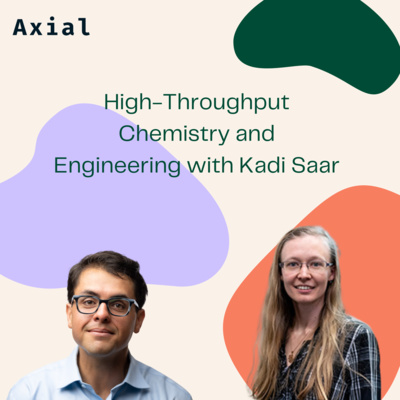
High-Throughput Chemistry and Engineering with Kadi Saar
Really excited to put out this conversation with Kadi Saar, an outstanding inventor and world-class computational chemist, where we discuss her career spanning childhood interests to graduate research to her work now around high-throughput structural biology and condensates. Kadi is a rising star in life sciences building out new experimental and computational tools to probe biology and advance human health.
Early on in her life, it was pretty obvious that Kadi was very unique. She won Estonia's Got Talent for mental arithmetics. You can watch her talent here: https://www.youtube.com/watch?v=wBNrq28ADQY I give Kadi a set of numbers to multiply to see if she still has it. She was a world-ranked tennis player growing up, and ultimately had to make the tough decision to focus on chemistry and engineering upon entering university. She went to Cambridge (Trinity College) studying chemical engineering and biotechnology and conducted her PhD research under Tuomas Knowles also at the University of Cambridge. Afterwards, Kadi did a postdoc as a Schmidt Science Fellow under Knowles and Alpha Lee.
While doing her postdoc, Kadi published really exciting research around merging high-throughput structural biology and computational chemistry to predict protein:ligand affinities and improve virtual screening for drug development. I would really recommend reading her preprint and we also touch upon it later in the conversation: https://www.biorxiv.org/content/10.1101/2021.10.15.464568v1.full.pdf In short, the preprint shows that ~100 diverse structures of a ligand in complex with a target protein, using a COVID-19 protease as a proof-of-concept, along with first comparing compounds pairwise before ranking them by bioactivity to remove experimental noise is sufficient to virtually design high affinity binders.
Kadi, in my opinion, is a great example to follow. The conversation goes a lot into her journey towards becoming a scientist and will serve as a resource for years to come. Looking forward to doing another one in a few years and getting an update on Kadi's work. A favorite quote of mine after speaking with Kadi is working on projects where she "likes the people", in particular when having to choose between multiple equally exciting directions.

Machine Learning-Assisted Directed Evolution with Bruce Wittmann
We discuss Bruce's career from being pre-med and getting into research while at Washington University in St. Louis to working at Intrexon and going to grad school at Caltech afterwards. While at Intrexon, he saw the need for better tools to scale biology and decided to go to Caltech to pursue his ideas. At Caltech, he was advised by Prof. Frances Arnold, who pioneered the protein engineering technique "directed evolution" that eventually led to her winning the Nobel Prize in Chemistry in 2018. While a member of the Arnold Lab, Bruce was part of a group bringing machine learning to protein engineering and directed evolution; over the course of 5 years, Bruce did some incredible work in grad school.
A key paper was published in Cell around machine learning-assisted directed protein evolution: https://www.cell.com/cell-systems/fulltext/S2405-4712(21)00286-6
You can also read his graduate dissertation here: https://thesis.library.caltech.edu/14631/
Beyond his research and numerous papers, we also discuss the broader field of protein engineering and ML and his perspective on new opportunities in comp bio and protein design. On top of all of this great work, Bruce along with several people from the Arnold Lab maintain one of the best documented GitHub repos in bio: https://github.com/fhalab/MLDE. A favorite quote of mine after speaking with Bruce is around his goal to build tools that "are accessible to as many people as possible."

New Models, Tools, and Targets for the Brain: Breakthroughs in Phosphoproteomics and Neurodegeneration with Nader Morshed from the White and Tsai Labs at MIT
We discuss Nader's career from learning structural biology in the Marqusee and Alber Labs at UC Berkeley to his pioneering graduate work at MIT with Forest White and Li-Huei Tsai and now at Stevens at Harvard Medical School. The conversation is centered around the 2 groundbreaking papers he published while earning his PhD:
1. Phosphoproteomics identifies microglial Siglec-F inflammatory response during neurodegeneration
2. Quantitative phosphoproteomics uncovers dysregulated kinase networks in Alzheimer’s disease
His research uses phosphoproteomics to capture the heterogeneity in Alzheimer's disease progression and uncover new leads to understand neurodegeneration. Genetic studies like GWAS will only find risk factors so proteomics and other tools are needed to comprehensively understand new biology and disease. Nader's work is centered around new models, tools, and targets. In particular, we need better mouse models to capture the same genes and capture human pathology. For example, Nader's work has found glial cell protein clusters as a promising lead that increase in expression slightly later than tau but earlier than neurodegeneration. This observation would not have been captured by a purely genomics approach. I am sure the best is yet to come given the impact of his research. A favorite quote of mine after speaking with Nader is around his long-term goal to "inspire the next-generation of scientists."

Precision-First Therapeutics: Building the Next Roche with Diego Rey, Co-Founder and CSO of Endpoint Health
We discuss Diego's career from building GeneWeave (acquired by Roche) to Endpoint Health now. Endpoint is pioneering a new business model merging diagnostics, data, and drug development to start with patient data and back into a therapy. The company is using their platform to develop first-line medicines for indications in infectious diseases with no approved therapies and beyond. Truly, Endpoint is leading a new wave of progress within critical and chronic illnesses. A favorite quote of mine after speaking with Diego: during an acquisition, "as an entrepreneur, you do a deal like this once." so while at GeneWeave they hired a bank to organize the entire process.

From Paint to Biotech: Turning Biology into a Predictive Science, The Story of Seven Bridges, Totient, and AbSci with James Sietstra and Deniz Kural
We discuss James' and Deniz's careers from how they first met to founding Seven Bridges and Totient and now building AbSci after Totient was recently acquired. With experience leading teams in the 100s spanning genomics and SaaS to drug development and even paint from James' childhood entrepreneurial pursuits, both have an incredible amount of wisdom on scaling technology companies. We touch on AbSci's unique model of accelerating and lowering the barriers for biologics development and talk about the finding the right platform-partner fit. Some favorite quotes of mine after this conversation are: during any negotiations, "competition is highly important for deals" and Deniz's experience of "seeing the future early but unevenly distributed" just as sequencing costs began coming down outpacing Moore's Law.

Data Driving Experimentation: Merging Biology and Data Science with Jacob Oppenheim, VP of Integrative Data Sciences at EQRx
We discuss Jacob's career going from physics to biology and making the transition from academia to industry. Building and leading data science teams at GNS Healthcare, Indigo, and now EQRx, Jacob is one of the best data scientists in biotech. In our conversation, we talk about ways to generate standardized data for machine learning models, building interdisciplinary teams, and implementing relevant models for drug development. Then we touch on EQRx's fast follower drug development model and the role of data in integrating decision making across the board from target ID to commercialization. A favorite quote of mine from talking to Jacob was: "things don't change much until they change all at once."

Next-Generation Biotech Platforms: Engineering Biology with Brian Naughton, Founding Scientist at 23andMe and Co-Founder and Head of Data at Hexagon Bio
We discuss Brian's career starting at Trinity in Dublin to Stanford, 23andMe, and Hexagon. In our conversation, we talk about the interplay between computation and biology, business models in biotech, and what it takes to build world-class teams. Brian really has the superpower of building and being part of talent hubs. If he ever wants to, I know he would build the best talent agency in biotech.

Cloud BIology: Automation and the Future of Biology with with DJ Kleinbaum, Co-Founder and Co-CEO of Emerald Cloud Lab
We discuss the founding story of Emerald Cloud Lab, their mission to help scientists to get access to any instrument they want, the company's platform and applications, long-term vision and more. A favorite quote of mine from talking to DJ was: "understand the stories of the advice you get."

Borgs: Genome and Climate Engineering with Basem Al-Shayeb from the Banfield and Doudna Labs at UC Berkeley
We discuss Basem's recent preprint, Borgs are giant extrachromosomal elements with the potential to augment methane oxidation. In our conversation, we discuss Basem's scientific career, the story of Borgs, how they were named, and their impact on our environment. A favorite quote of mine from talking to Basem was: "the next great discovery could be right in your backyard."

Beyond Undruggable: The Future of Drug Development with Cameron Pye & Joshua Schwochert from Unnatural Products
Cameron Pye and Joshua Schwochert are the founders of Unnatural Products. For the first podcast, we discuss their founding story coming out of academia, the history of macrocycle natural products, and how Unnatural Products is using synthetic macrocycles to usher in the the future of drug development.